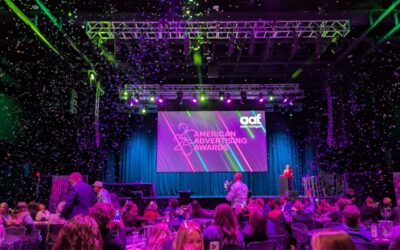What defines inclusivity in community engagement?
In our first Coffee Klatsch, Har Ye Kan of HYK Consulting discusses intentional inclusivity, asking, “Who are we leaving out of the conversation?”
Top Takeaways:
- Intentional inclusivity is about creating a safe and welcoming environment to bring together multiple perspectives.
- In order to reach more broadly and bring in all members of the community, sometimes you need to bring the conversation to them.
- A small investment of time and/or money in reaching out to the whole community will reap long term benefits in that it will make change easier to embrace.
Learn more about Har Ye Kan on her LinkedIn page.
Transcript:
Har Ye Kan: I love the word that you used, which is “investment.” Sometimes it’s not visible in the short term but it makes a difference in the long term.
Vince Boileau: Hey, friends! Welcome to the Coffee Klatsch. This is a series where we get to talk to people that we find interesting, to talk about insights and new ways of thinking and things that you could put to work in your organization. And so today I’m joined by Har Ye Kan. Welcome to the show.
HYK: Hi Vince, thanks for having me.
VB: Har Ye is from HYK Consulting, where she does urban planning. She does lecturing at Hope [College], and in her past has done research at a number of different universities including Harvard School of Design.
HYK: That’s right, Vince.
VB: So welcome to the show. So the first thing we have to talk about is the mugs. Tell me about this beautiful piece that you brought on.
HYK: This piece was one of the first mugs that I received really here when my family moved to the Holland area, and I was looking around at schools and decided to volunteer at Zeeland Christian in their Mandarin immersion program. And so this was a gift really from Zeeland Christian and one of their teachers there.
VB: It’s beautiful. Today I’m drinking out of Braver Angels. You know, I think we talked about this at our leadership [group]. I just love the idea of listening and kind of bringing two sides together, depolarization. This is an organization that does that. Well, all right, so we have three topics we’re going to talk about today. The first topic is intentional inclusivity. In the context of community planning, tell me about this idea of being inclusive intentionally and planning for it early in the process.
HYK: Urban planning — a key component of that, really, is community planning, and that really means embracing the community as a whole — knowing that a community is made up of different pockets of people, bringing together multiple perspectives and then being able to synthesize them and to build a common understanding even if you might start off with very different values from the very beginning. When I do that work it’s about figuring out who’s at the table, whose voices are represented, whose voices are we not hearing, why are we not hearing them, and how can we reach them, creating that safe, comfortable space where they feel like we can go to them easily or they can be in a part of a conversation where they’re able to share without feeling like they’re being judged, and that all that they say will be valued and will make a difference in the process.
VB: How do you create that context? Something that we like to call “real listening,” right? Yeah, how do you create that? And maybe give us an example, maybe, like Waterfront Holland. You know, can we talk about that? Let’s have a look, let’s have an example of, like, how do we create an environment for real listening and pull out some of these voices that we might not otherwise hear from.
HYK: That was a big community project here and it was really a public-private partnership. But then we also asked ourselves, “Who are we not listening [to]?” or “Who has not come to these sessions?” and so when we set up those different opportunities, we thought about, how do we reach broadly? How can we reach people who feel like it’s not convenient to come to these places or they don’t feel like they want to step into city hall? And so then we went out to them. Community Action House, for instance, was really wonderful in inviting us to participate in one of their weekly food give-out sessions. We were standing in line just talking to individual people. Then they’ve had the opportunity to express that it is key to them and why public access is important because that’s where they go for their respite and it makes a difference to their mental well-being.
VB: Yeah, it takes time and it takes money to do this. It’s not a ton of money, but it does take an investment. Why is it worth it?
HYK: I love the word that you used, which is “investment.” Right, because you’re doing something in the short term knowing that it will reap long-term benefits. And sometimes it’s not visible in the short term, but it makes a difference in the long term. You’re building a relationship. You’re also fostering trust. When you forego that, there are times when change is really hard to embrace, and that makes the implementation so much harder.
VB: All right, so that’s intentional inclusivity.
HYK: It is, yeah.
VB: Thanks for joining us this morning.
HYK: Absolutely. Thanks so much, Vince.
